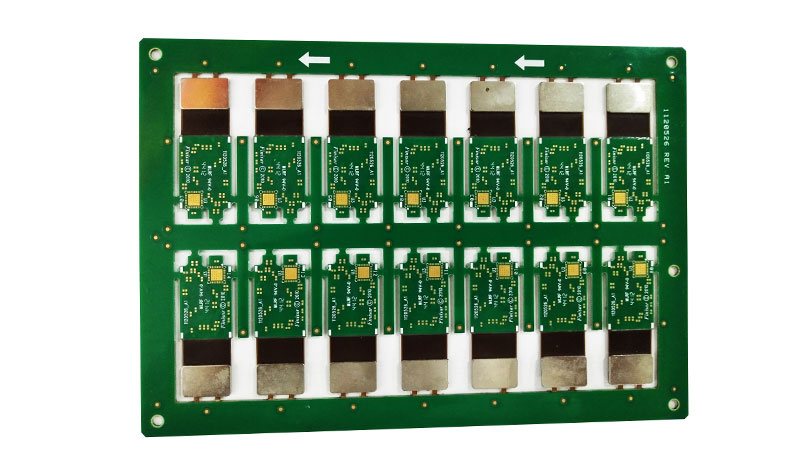Today Rigid Flex PCB Manufacturer will discuss with you what rigid flex PCBs are, the advantages of using them, and the rules for designing with them.
In electronics, we sometimes encounter seemingly new technologies that have their roots in the past. Rigid-flexible PCB technology dates back about 50 years and the wiring harnesses in the spacecraft need to be replaced. The first commercial mobile computer (weighing more than 25 pounds!) Used rigid and flexible technology.
What is a rigid flexible PCB? A rigid-flex PCB is used, and the flexible circuit substrate and the rigid circuit substrate are laminated together. Rigid and flexible PCBs cross the boundaries of traditional Rigid PCBs and the unique properties of flexible circuits. Conductive plating or rolled annealed copper conductors are photo-etched onto flexible insulating films.
Flexible circuits include laminated heat, acrylic adhesive and pressure laminated by flexible polyimide and copper.
Rigid Flex PCB Board
What are the advantages of rigid flexible PCB?
Rigid Flex PCB Board still exists in the panel after manufacturing. As with traditional PCBs, you can mount components on both sides of a rigid board. Due to the integration between rigid and flexible circuits, rigid-flex designs do not use connectors or connecting cables between parts. Instead, flex circuits electrically connect the systems together.
Missing connectors and connecting cables do the following:
1.Improve circuit transmission capacity without loss of signal;
2. Adapt to controlled impedance;
3. Eliminate connection problems such as cold junctions;
4. Reduce weight;
5. Make room for other components.
Each rigid-flex PCB is divided into areas with different materials and different layers. The rigid region may have more layers than the flexible region, and the material is transferred from FR-4 to polyimide in the transition region. Complex designs often change from rigid to flexible and again to rigid. When these intersections occur, the overlap of rigid and flexible materials requires keeping the hole away from the transition area to maintain integrity. In addition, many rigid-flex designs include stainless steel or aluminum stiffeners to provide additional support for connectors and components.
Flexible circuits always have bent wires that affect wiring. Due to possible material stresses, it is not possible to place components or vias near bend lines. Even when components are positioned correctly, flex flex circuits can cause repeated mechanical stress on surface mount pads and vias. Your team can alleviate these pressures by using through-hole plating and supporting the pad support with additional overlays to secure the pad.
When designing rigid-flex PCBs, consider the electromechanical factors that affect flexible circuits and rigid circuit boards. As you build your design, pay attention to the ratio of bend radius to thickness. For flexible circuits, narrowing or increasing the thickness of the bend area increases the likelihood of failure. The manufacturer recommends keeping the bend radius at least ten times the thickness of the flexible circuit material.
Avoid flexing the flexible circuit along its outside or compressing the flexible circuit along its inside. Increasing the bending angle beyond 90°increases tension at one point and compression at another point on the flexible circuit.
Another key issue with rigid flexible reliability is the thickness and type of conductor in the flexed area. You can reduce thickness and mechanical stress by reducing the amount of plating on the conductor and using only pads. The use of heavy copper, gold or nickel plating reduces the flexibility of bends and allows mechanical stress and fracture to occur.

没有评论:
发表评论